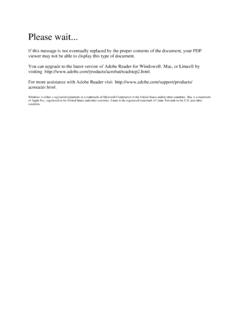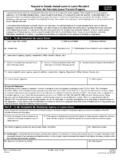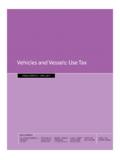Transcription of It's hot outside! Extreme heat media toolkit
1 HEATEXHAUSTIONH eavy sweating WeaknessCold, pale, clammy skinFast, weak pulse Nausea or vomiting FaintingSeek medical care immediately if you have or someone you know has symptoms of heat -related illness. Warning signs and symptoms vary but may include:High body temperature (above 103 F)*Hot, red, dry or moist skin Rapid and strong pulsePossible unconsciousnessHEATSTROKE*104 F taken rectally is the most accurate Extremely hot weather can cause sickness or even death. STAY COOL. Stay in air-conditioned buildings as much as possible and avoid direct sunlight.
2 STAY HYDRATED. Drink plenty of water and don t wait until you re thirsty to INFORMED. Stay updated on local weather forecasts so you can plan activities safely when it s hot outside . KNOW WHEN IT S HOT! Check local news for Extreme heat alerts and safety COOL. STAY for DiseaseControl and PreventionNational center forEnvironmental HealthDuring an Extreme heat event, check on at-risk friends, family, and neighbors at least twice a day. Encourage them to: Check on a friend or neighbor, and have someone do the same for you. Avoid using the stove or oven to cook.
3 Wear loose, lightweight, light-colored on the elderly, or people aged 65 years or older, to make sure they are safe by staying cool, hydrated, and informed. People with a chronic medical condition are less likely to sense and respond to changes in temperature. Also, they may be taking medications that can intensify the effects of Extreme heat . WHO NEEDS SPECIAL CARE?The elderly, people with a chronic medical condition, children, homeless or poor, outdoor workers, and athletes are most at-risk to heat MORE all activity and get to a cool environ-ment if you feel faint or and people who exercise in Extreme heat are more likely to become dehydrated and are more likely to get heat sickness.
4 Limit outdoor activity, especially mid-day when it is the hottest part of the day. Schedule workouts and practices earlier or later in the day to avoid mid-day heat . Pace activity. Start activities slowly and pick up the pace gradually. Drink from two to four cups of water every hour while exercising. Muscle cramping may be an early sign of heat sickness. Most cities offer cooling centers or other air-conditioned shelter to the homeless or poor during times of Extreme leave infants or children in a parked car. Nor should pets be left in parked cars they can suffer heat sickness who work outdoors are more likely to become dehydrated and are more likely to get heat sickness.
5 Drink from two to four cups of water every hour while working. Don t wait until you are thirsty to drink. Avoid alcohol or liquids containing large amounts of sugar. Wear and reapply sunscreen as indicated on the package. Ask if tasks can be scheduled for earlier or later in the day to avoid midday heat .














